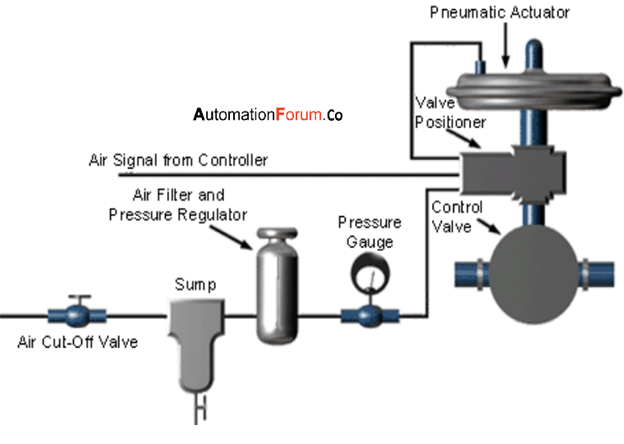Control Valve
Pneumatic vs Electrical actuators

The main difference between pneumatic and mechanical actuators is their working speed. The two systems are so distinct, that one can not replace the other with a drop-in. Each one has its own intrinsic benefits and disadvantages:
Advantages of Pneumatic actuators:
- The pneumatic actuators ‘ greatest advantage is their failsafe operation. Through engineering the compressed spring, the designer will decide whether the valve will break, either closed or open, based on process protection.
- Provide high power and speed, easy to adjust and independent of each other.
- Most economical when the scale of deployment matches the capacity of the compressor.
- Provide inherent safety and are ideal for explosive and hazardous environments.
- Have a delayed response which makes them ideal for resilience to minor disruptions in source pressure changes
Limitations of Pneumatic actuators:
- Maintenance and operating costs can be high, especially if there has been no serious effort to quantify and minimize the costs.
Advantages of Electrical actuator:
- Provide precise power and placement as opposed to pneumatic actuators.
- Response time is essentially instantaneous.
- High degree of stability.
- Cost of operation small. Controllers and low stress drivers use much less energy.
- Help adapt machines to flexible processes.
Limitations of electrical actuator:
- The main disadvantage of an electric actuator is that if a power failure happens, the valve stays in the last position and the fail-safe position can not be easily obtained unless a suitable supply of stored electrical energy exists.
- Costs higher than pneumatic actuators. The total cost ranges between $800 and $3,000 and more.
- The actuator must be in an area which is made safe. Not generally recommended for flame retardant atmospheres





